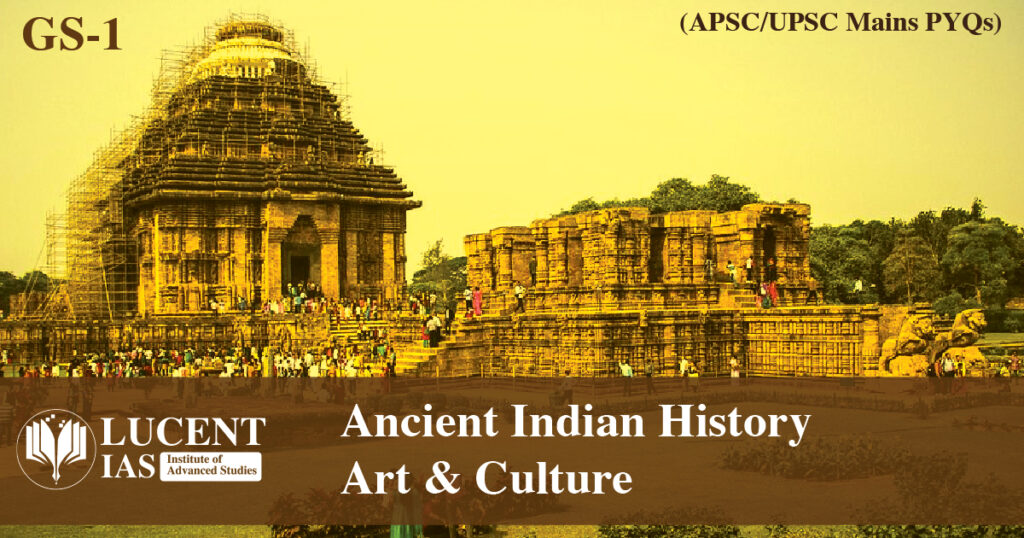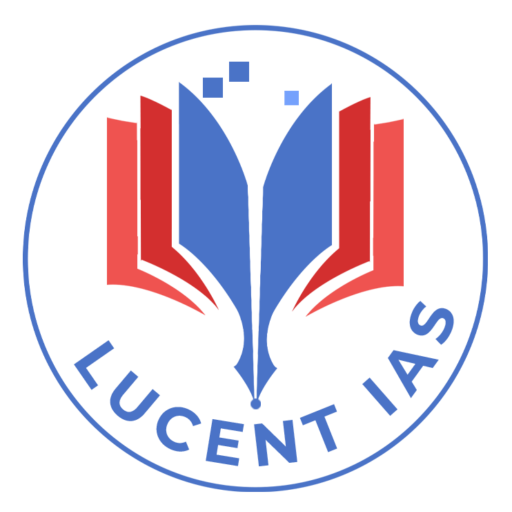
- Elements of dissent and protest were inherent in the preaching of the various Bhakti saints in medieval India. Discuss with examples. 150 words, 10 marks. [APSC CCE 2023]
- Indian classical music has played a significant role in preserving cultural heritage and strengthening national integrity. Critically analyse with suitable examples. 250 words, 15 marks. [APSC CCE 2023]
- Evaluate the religious and historical importance of the Puranas in India. 250 words, 15 marks. [APSC CCE 2023]
- Elements of dissent and protest were inherent in the preaching of the various Bhakti saints in medieval India. Discuss with examples. 150 words, 10 marks. [APSC CCE 2023]
- Indian classical music has played a significant role in preserving cultural heritage and strengthening national integrity. Critically analyse with suitable examples. 250 words, 15 marks. [APSC CCE 2023]
- Evaluate the religious and historical importance of the Puranas in India. 250 words, 15 marks. [APSC CCE 2023]
- How do the Principles of Buddhism inspire ecological mindfulness to address the loss of biodiversity? 150 words, 10 marks. [APSC CCE 2022]
- Illustrate with suitable example how syncretism became of part of Indian Architecture during medieval period. 250 words, 15 marks [APSC CCE 2020]
- Write a note on the origins, evolution and salient features of the Sattriya Dance of Assam. 150 words, 150 words, 10 marks. [APSC CCE 2020]
- Highlight the major themes of the prehistoric paintings of India. 150 words, 10 marks [APSC CCE 2020]
- Underline the changes in the field of society and economy from the Rig Vedic to the later Vedic period. 150 words, 10 marks. [UPSC CSE 2024]
- Estimate the contribution of Pallavas of Kanchi for the development of art and literature of South India. 150 words, 10 marks. [UPSC CSE 2024]
- “Though the great Cholas are no more yet their name is still remembered with great pride because of their highest achievements in the domain of art and architecture.” Comment. 250 words, 15 marks. [UPSC CSE 2024]
- What are the main features of Vedic society and religion? Do you think some of the features are still prevailing in Indian society? 250 words, 15 marks. [UPSC CSE 2023]
- What were the major technological changes introduced during the Sultanate period? How did those technological changes influence the Indian society? 250 words, 15 marks. [UPSC CSE 2023]
- Discuss the significance of the lion and bull figures in Indian mythology, art and architecture. 250 Words, 15 Marks. [UPSC CSE 2022]
- Discuss the main contributions of Gupta period and Chola period to Indian heritage and culture. 250 Words, 15 Marks. [UPSC CSE 2022]
- How will you explain that medieval Indian temple sculptures represent the social life of those days ? 150 words, 10 marks. [UPSC CSE 2022]
- Evaluate the nature of the Bhakti Literature and its contribution to Indian culture. 150 words, 10 marks. [UPSC CSE 2021]
- The rock-cut architecture represents one of the most important sources of our knowledge of early Indian art and history. Discuss. 150 words, 10 marks. [UPSC CSE 2020]
- Pala period is the most significant phase in the history of Buddhism in India. Enumerate. 150 words, 10 marks [UPSC CSE 2020]
- Indian philosophy and tradition played a significant role in conceiving and shaping the monuments and their art in India. Discuss. 250 words, 15 marks [UPSC CSE 2020]
- Persian literary sources of medieval India reflect the spirit of the age. Comment. 250 words, 15 marks [UPSC CSE 2020]
- Highlight the Central Asian and Greco-Bactrian elements in Gandhara art. 150 words, 10 marks [UPSC CSE 2019]
- Safeguarding the Indian art heritage is the need of the moment. Discuss. [UPSC CSE 2018]
- Assess the importance of the accounts of the Chinese and Arab travellers in the reconstruction of the history of India. [UPSC CSE 2018]
- The Bhakti movement received a remarkable re-orientation with the advent of Sri Chaitanya Mahaprabhu. Discuss.[UPSC CSE 2018]
- How do you justify the view that the level of excellence of Gupta numismatic art is not at all noticeable in later times? [UPSC CSE 2017]
- Early Buddhist Stupa-art, while depicting folk motifs and narratives successfully expounds Buddhist ideals. Elucidate. [UPSC CSE 2016]
- Krishnadeva Raya, the King of Vijayanagar, was not only an accomplished scholar himself but was also a great patron of learning and literature. Discuss. [UPSC CSE 2016]
- The ancient civilization in Indian sub-continent differed from those of Egypt, Mesopotamia and Greece in that its culture and traditions have been preserved without a breakdown to the present day. Comment. [UPSC CSE 2015]
- Mesolithic rock cut architecture of India not only reflects the cultural life of the times but also a tine aesthetic sense comparable to modem painting. Critically evaluate this comment. [UPSC CSE 2015]
- To what extent has the urban planning and culture of the Indus Valley Civilization provided inputs to the present day urbanization? Discuss. [UPSC CSE 2014]
- Gandhara sculpture owed as much to the Romans as to the Greeks. Explain. [UPSC CSE 2014]
- Taxila university was one of the oldest universities of the world with which were associated a number of renowned learned personalities of different disciplines. Its strategic location caused its fame to flourish, but unlike Nalanda, it is not considered as a university in the modern sense. Discuss. [UPSC CSE 2014]
- Sufis and medieval mystic saints failed to modify either the religious ideas and practices or the outward structure of Hindu / Muslim societies to any appreciable extent. Comment. [UPSC CSE 2014]
- Though not very useful from the point of view of a connected political history of South India, the Sangam literature portrays the social and economic conditions of its time with remarkable vividness. Comment. [UPSC CSE 2013]
- Discuss the Tandava dance as recorded in the early Indian inscriptions. [UPSC CSE 2013]
- Chola architecture represents a high watermark in the evolution of temple architecture. Discuss. [UPSC CSE 2013]
For Live Answer Writing sessions and other courses, Visit the following links:
Lucent IAS Website: https://lucentias.com/courses/
Lucent IAS Study Portal: https://study.lucentias.com/products/
About Lucent IAS:
Lucent Institute of Advanced Studies is a premier civil services coaching institute based in Guwahati, Assam. Since its inception in 2020, the institute has guided over 250 aspirants to success in APSC CCE and UPSC CSE, with several securing top 10 ranks—including Rank 1 in APSC CCE 2023.
Lucent IAS is widely recognized for its comprehensive and Assam-focused preparation, especially through its highly acclaimed Foundation Course. Students from the institute have also excelled in other government recruitment exams such as Forest Ranger, Research Assistant, Tourism Development Officer, and CDPO (Child Development Project Officer) exams conducted by Assam Public Service Commission and other departments of Assam G
The institute’s strength lies in its robust Mains-oriented courses, high-quality Prelims and Mains Test Series, and result-driven Interview Guidance Programs—offered in both online and offline modes.
Lucent’s popular publication, Prarambha, has further cemented its reputation. Known for its rich content and visually engaging presentation, the book has become a go-to resource for both UPSC and APSC aspirants.

